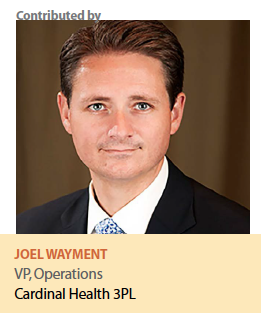 For commercial teams at pharmaceutical companies, reaching physicians with product messaging has never been more challenging. In fact, according to 2016 research from AccessMonitor1, only 44% of physicians, were considered accessible to pharmaceutical sales representatives — a decline from 80% in 2008. And one in five of all physicians “severely" limit access to reps.
For commercial teams at pharmaceutical companies, reaching physicians with product messaging has never been more challenging. In fact, according to 2016 research from AccessMonitor1, only 44% of physicians, were considered accessible to pharmaceutical sales representatives — a decline from 80% in 2008. And one in five of all physicians “severely" limit access to reps.
Given these access restrictions and an increased focus on driving greater sales efficiency, many pharmaceutical companies are exploring the implementation of a direct-to-physician sampling program, typically in partnership with a third-party logistics (3PL) or distribution partner.
Direct-to-physician sampling provides several significant advantages over traditional sampling through sales representatives. Not only does it allow the pharma company to connect with so-called “no see" and “low see" providers and physicians, including those in remote locations, it also provides greater control and tracking over the distribution of samples, ensuring appropriate limits on how many samples each provider receives and reducing the number of sample returns. Sales representatives can then focus exclusively on selling, leading to greater efficiency in the sales channel.
If you are evaluating a direct-to-physician sampling program, there are several key considerations you should keep in mind.
Focus on Compliance
Compliance with the Prescription Drug Marketing Act (PDMA) should be a foundational component of any sampling program. You will need processes to ensure that providers who are receiving samples are licensed appropriately, and a system to track acknowledgements of content (AOC).
In addition, companies will want to have defined business rules that include frequency in which follow ups to the physician occur and actions to take for non-responders. Where possible, establishing multiple methods of contact with the physician will improve the rate of response.
Having the right resources within your organization or a partner who is fluent with the regulatory requirements will be key to implementing a compliant program.
Establish Rules for Frequency of Orders and Quantities
How often will you allow providers to order samples and what will be the maximum amount of product they can order at any time? Establishing these requirements at the outset will help to assure smooth execution of your program.
Make Ordering Easy
Usability is key to any successful DTP sampling program. Providers and their staffs have limited time, so having a technology platform that makes it fast and easy for them to order samples is essential.
When setting up a DTP sampling program, there are advantages to having it managed by the same partner that handles your commercial distribution. This alignment can enable you to easily convert short-dated product into free goods. However, not all distribution partners have equivalent capabilities. When assessing partners, consider the following critical questions:
Does the Partner Have Teams Dedicated to Sampling?
Because trade distribution and samples management are fundamentally different, a distribution partner should have separate teams managing the samples program to ensure this effort gets the appropriate focus and support.
Does Your Partner Have State-of-the-Art Technology?
Technology is critical to the implementation of your samples program, and to meeting compliance requirements and providing a positive experience for customers. You will want to ensure that you or your partner’s technology has the ability to integrate with third party applications commonly used with sampling.
Does Your Partner Have Repackaging Abilities?
If your distribution partner also has repackaging capabilities, you may be able to convert trade product to samples quickly, which can help to reduce waste by not having to destroy short dated or expired products.
Does Your Partner Offer the Flexibility to Enable you to Tailor Your Program to the Unique Needs of Your Product or Customers?
Every pharmaceutical product is unique, so it follows that not all sampling programs should be alike. Make sure you select a partner that can adjust the components of your program to serve your individual needs.
When designed carefully and implemented with a strong partner who brings technology, flexibility, and robust capabilities, a direct-to-physician sampling program can help a pharmaceutical company to increase access to providers, while driving improved efficiency in their commercial organization.(PV)
Note: 1 “Want Better Access to Physicians? Understand What’s Top of Mind", 2016, AccessMonitor and AffinityMonitor
Cardinal Health 3PL is a third-party logistics supplier that provides a full range of distribution solutions, including direct-to-physician sampling.
For more information, visit cardinalhealth.com/
pharma3PL or email Joel at
[email protected].


















